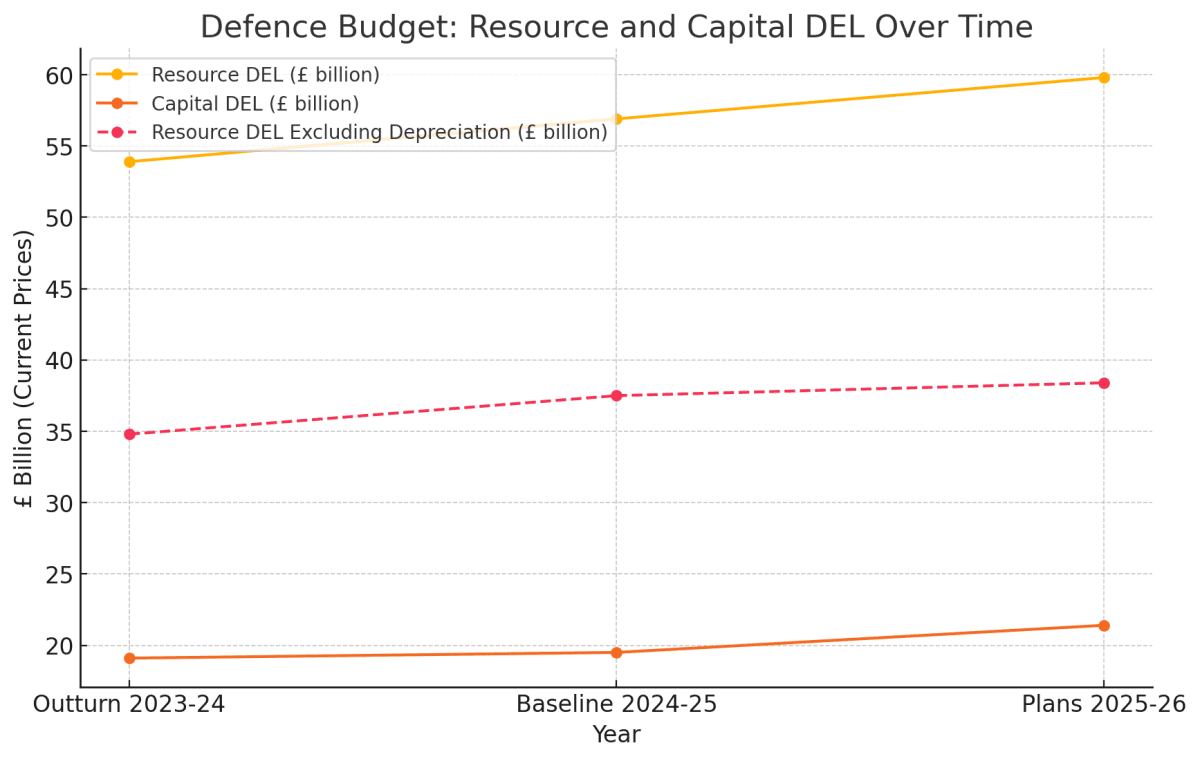UK Autumn Budget – what does it mean for defence?
04.11.24


04.11.24

Last week’s Autumn Budget was the first for a Labour government in 14 years, and with economic challenges still looming, the picture is not rosy for many departments. Did Labour’s budget show its commitment to defence and an ambitious vision for military spending? Or was it a tepid continuation of previous spending rounds?
We are in a period of exceptional global volatility with high-intensity conflicts taking place in Ukraine and the Middle East. Meanwhile, Russia (and its wider axis) is showing no signs of ending its aggressive and destabilising foreign policy.
Many countries have significantly increased defence expenditure to address this new and uncertain global environment, investing in new capabilities and bringing budgets in line with, or beyond, NATO’s 2% spending target.
Labour’s Autumn Budget therefore was a potential opportunity to establish the party as strong on defence and security, especially in such a turbulent time. But did it deliver?
Pre-budget reports indicated that Labour had earmarked some key departments for extra spending, rather than cuts, and this included defence. This was confirmed in the Autumn Budget, with £59.8 billion allocated for 2025-26, a 2.3% increase in real terms to the defence budget compared with 2023-24. According to the government, this means that UK defence spending will “comfortably exceed” NATO’s 2% spending target.
The budget also saw an increase in the money allocated to the capital expenditure budget, which will rise to £21.4 billion in 2025-26, a 3.4% growth in real terms compared with 2024-25.

While an increase is welcome, some argue that the uplift is marginal and amounts to a ‘sticking plaster solution’ to the problems that are endemic in defence spending. It is commonly reported that Defence suffers from a ‘black hole’ of projected spending vs. actual budget, with current estimates saying that this is £22 billion.
Also, it is worth noting that the government has still not clearly set out how it will achieve its defence spending target of 2.5% of GDP (potentially around £67.5 billion), something that Labour committed to in its manifesto but without a timeline.
In Parliament, the Chancellor somewhat kicked the can down the road by stating that the path to 2.5% will now be set out at a “future fiscal event”.
We will likely have a better understanding of the direction and health of UK defence next year, with several key events taking place. Of particular significance will be the 2025 Strategic Defence Review (SDR), a document that will address the external and internal challenges being faced by the UK Armed Forces and how they will respond.
This has traditionally been a time when governments commit to certain defence programmes, and cancel others – in 2010, the disastrous Nimrod MRA4 programme was unceremoniously culled by the new Conservative government. Will history repeat itself and a major programme be scrapped to reduce the funding deficit? Reductions in personnel and/or changes to force structures are also a possibility.

Large defence programmes will be under significant scrutiny during the 2025 Strategic Defence Review (Photo Copyright: Defence Media)
The UK Armed Forces and Government are also adept at ‘salami slicing’ – i.e. reducing requirements and saving on short-term expenditure – which ultimately means less but more expensive equipment. But surely defence has learned its lesson and won’t repeat this?
The SDR is expected sometime around the end of Q1 2025 and written submissions have already been taken from across the defence sector.
In addition to the SDR, we can also expect a new Defence Industrial Strategy (DIS), which will align with several other initiatives that are attempting to reform defence.
The DIS is also expected sometime next year, most likely around the same time as the SDR. The DIS follows on from the UK’s Invest 2035 Industrial Strategy document, which highlighted defence as a sector that offers “the highest growth opportunity” for the UK economy and businesses, alongside other industries including clean energy and life sciences.
Driving the DIS and reforms to defence acquisition will be a new National Armaments Director, which was a Labour Party manifesto pledge and was formally announced in October. Their role will be to “build up the British defence industry and to crack down on waste”, and recruitment is currently underway.
A new Military Strategic Headquarters (MSHQ) will also be stepped up, which will be “central” to investment decisions across the services.
The Labour Government has made efforts to be perceived as a party that prioritises defence and national security, and several initiatives being led by Defence Secretary John Healey have added credibility to this. However, the Autumn Budget has shown that budgetary commitment is still lacking and that a roadmap to 2.5% of GDP spending remains unclear. There are many uncertainties remaining and we will have to wait until next year for more clarity.


Signatories of:


Members of:



Innovation House
Molly Millars Close
Wokingham
RG41 2RX